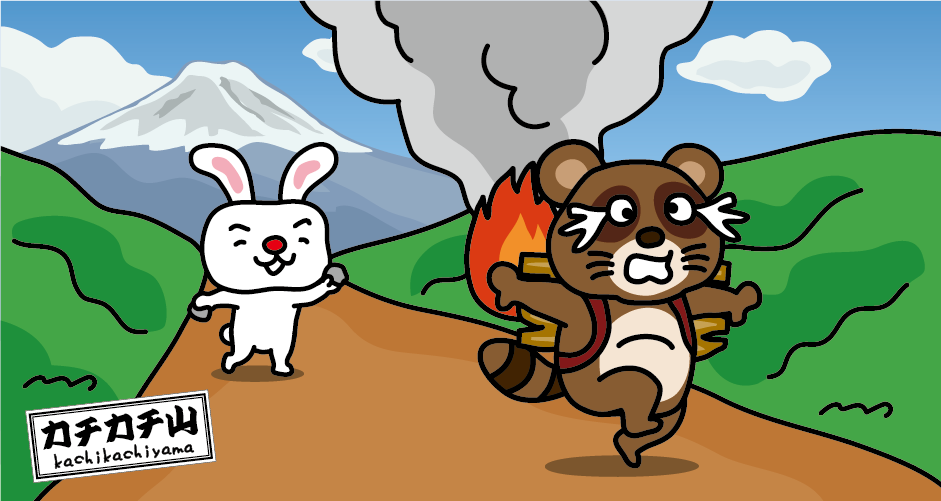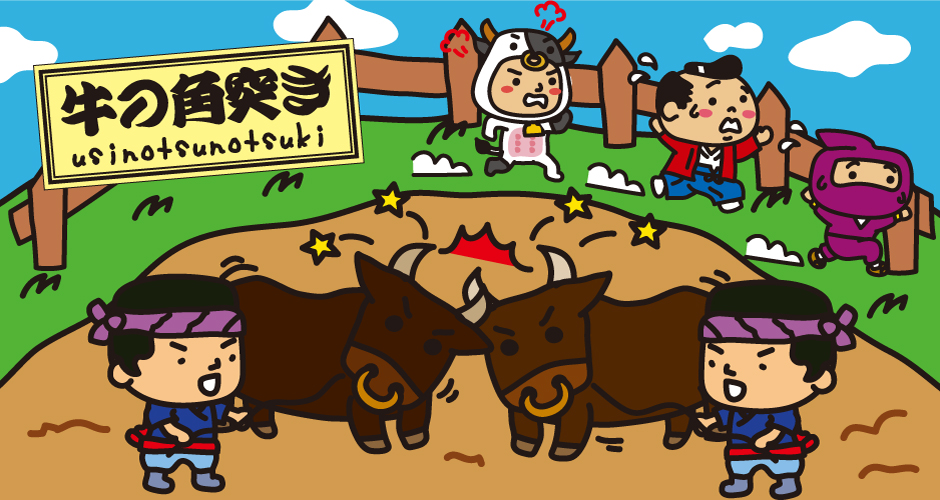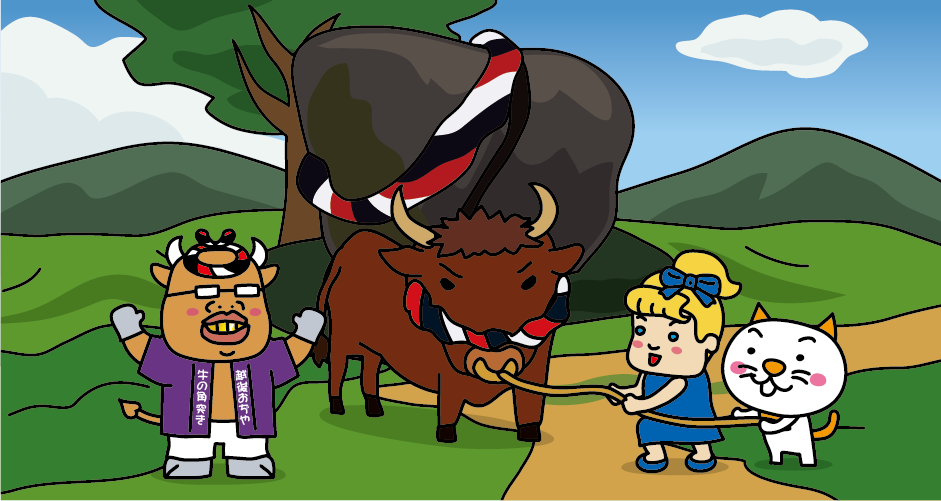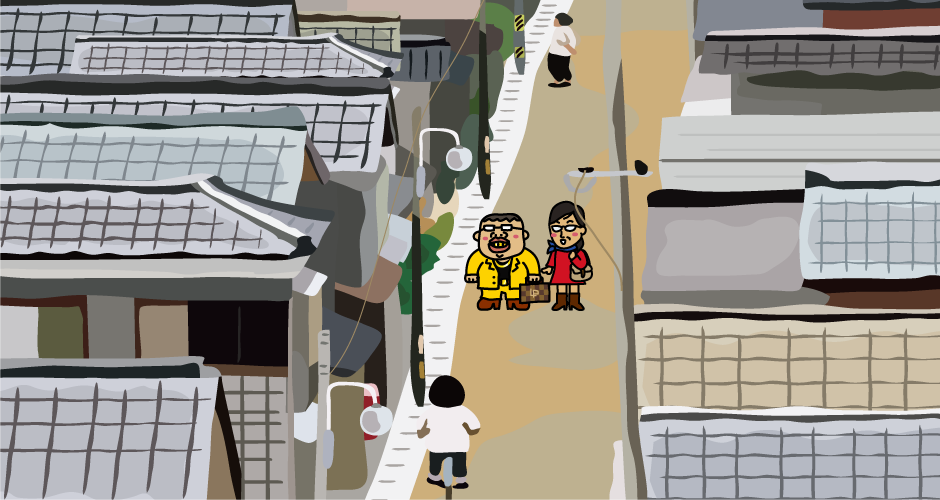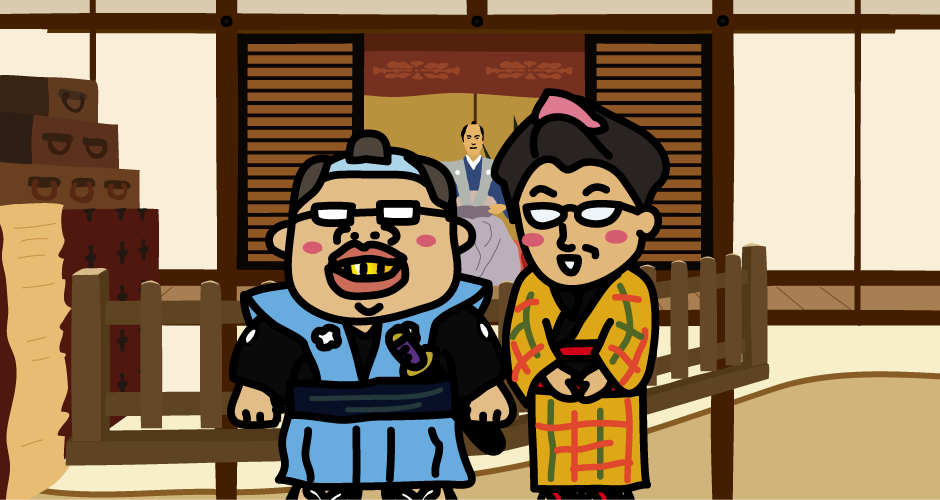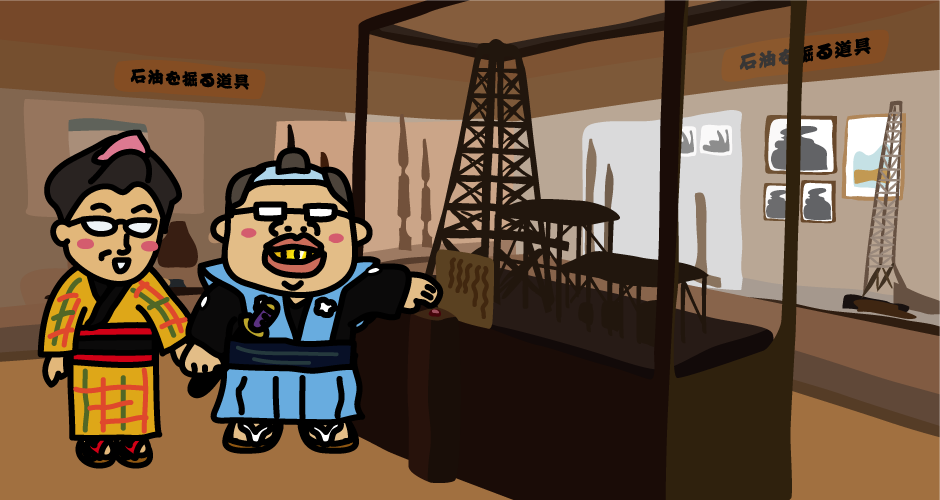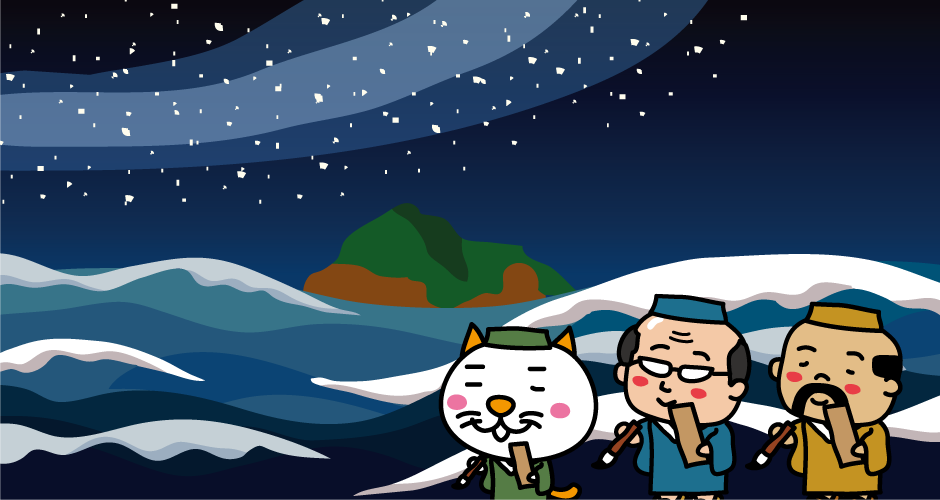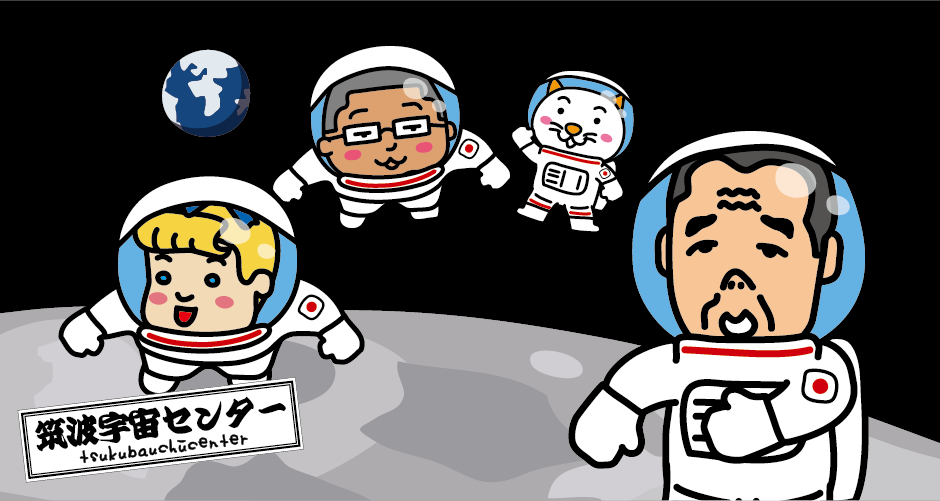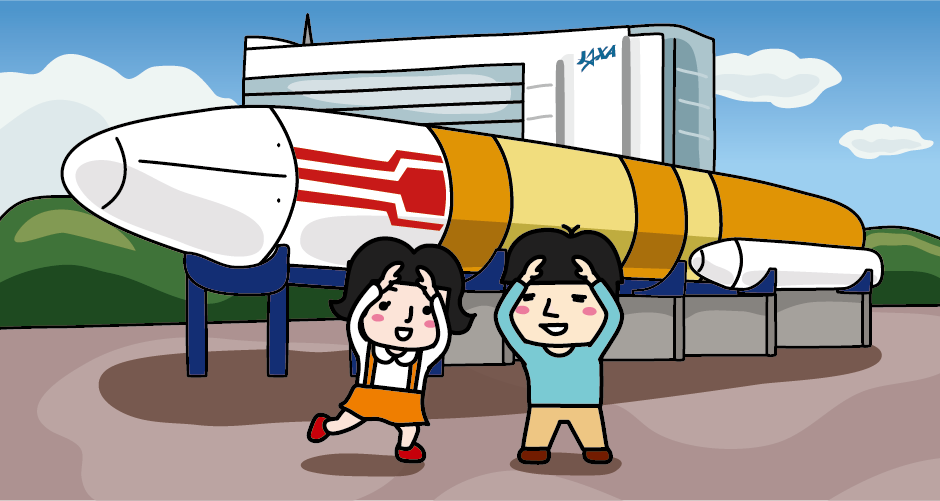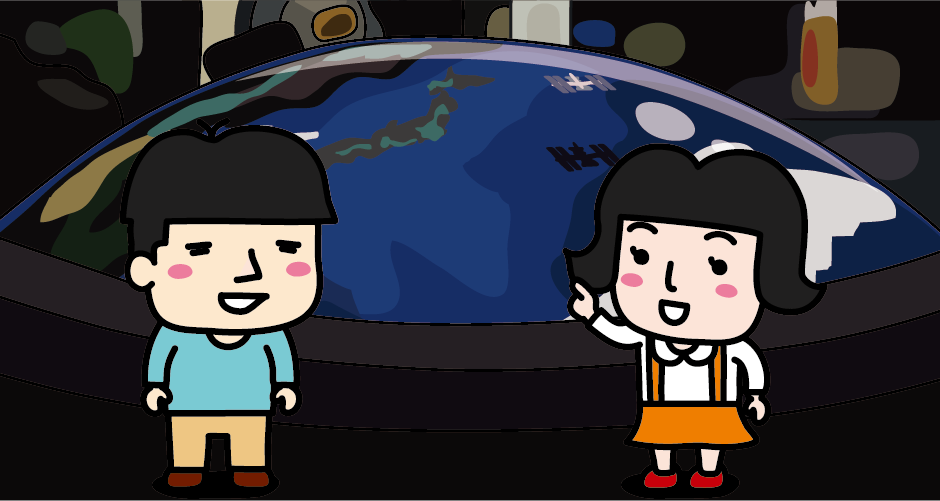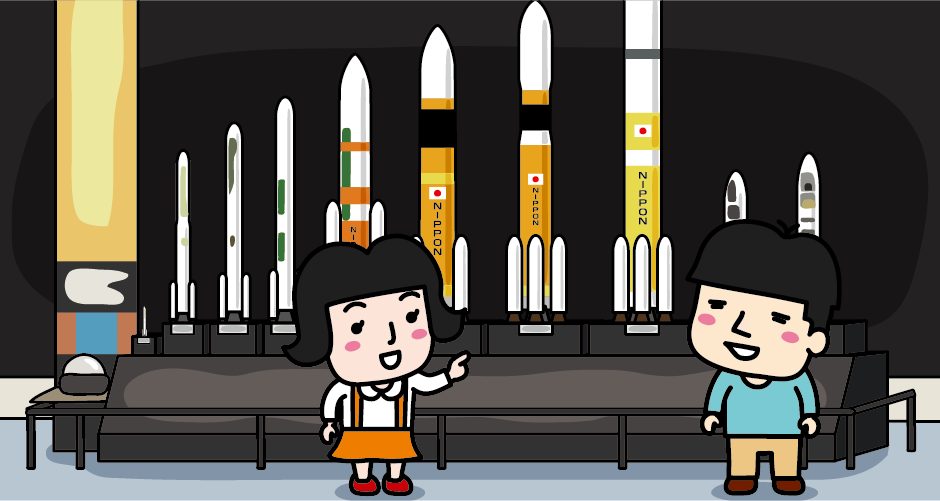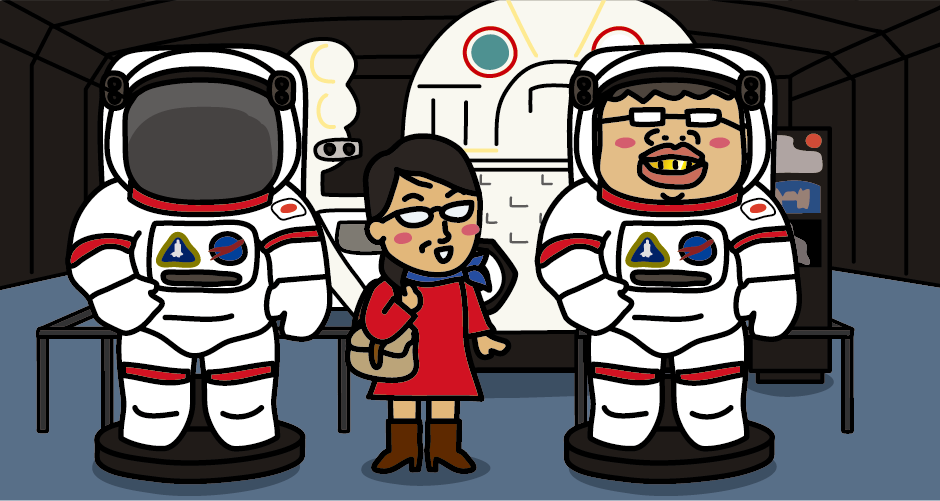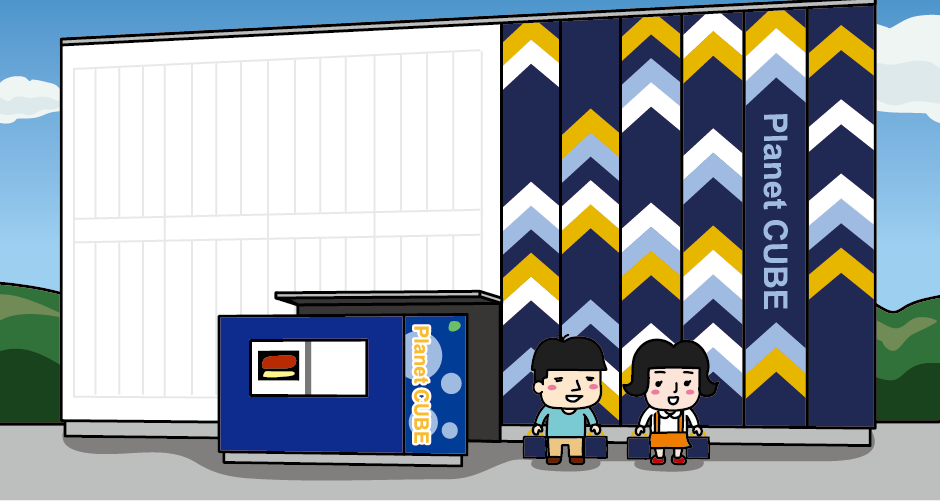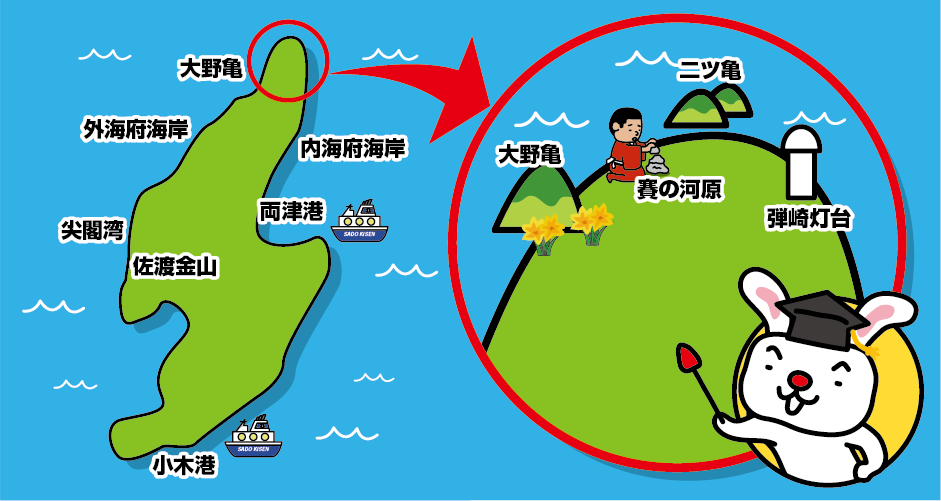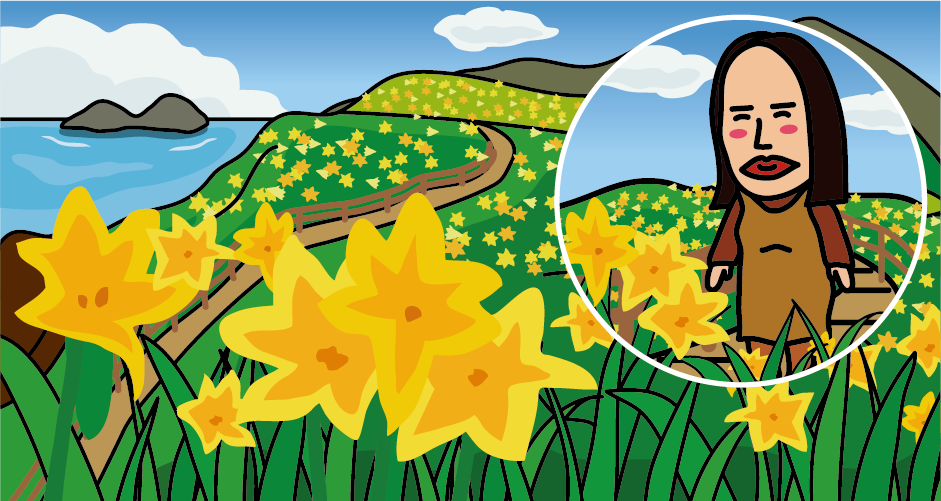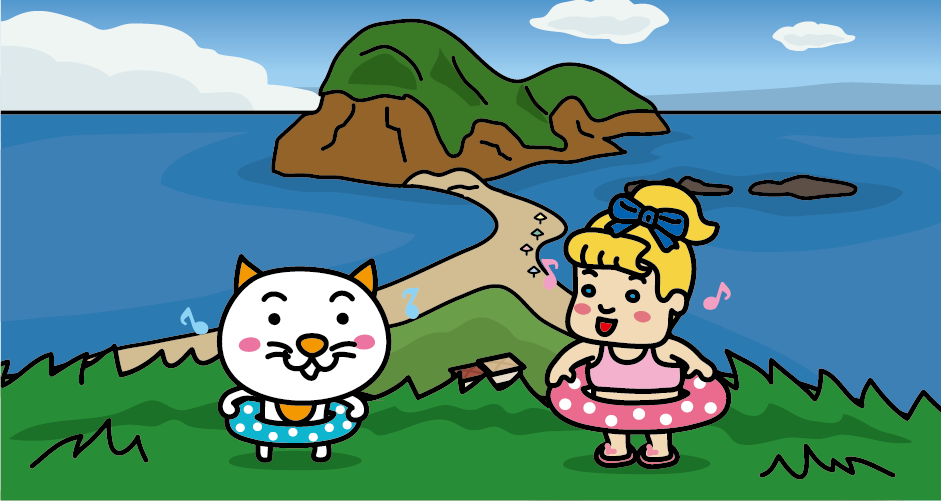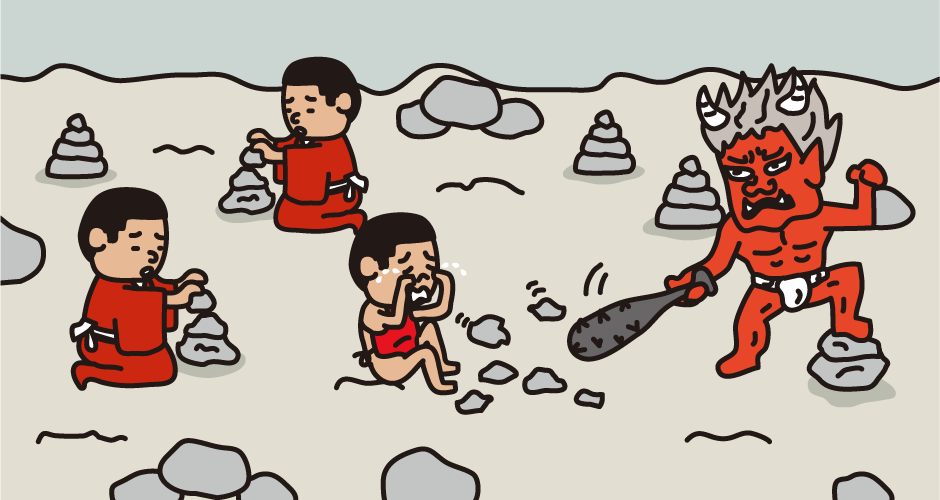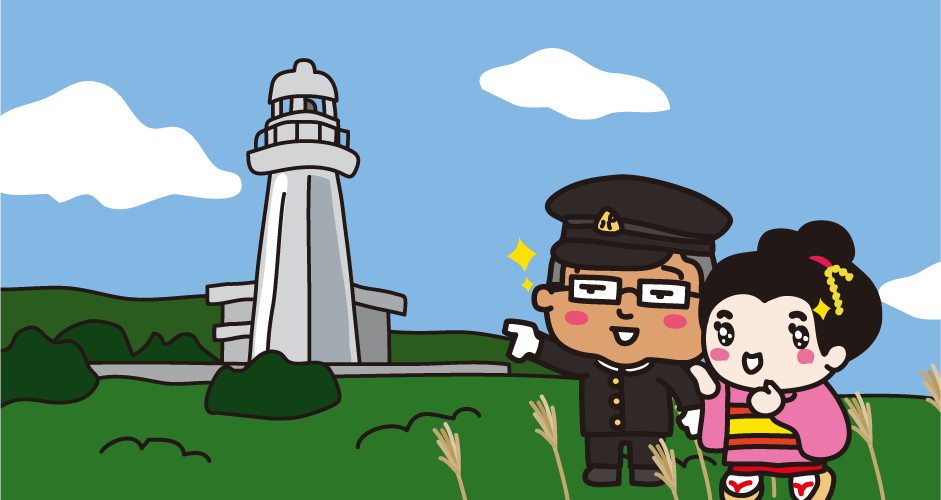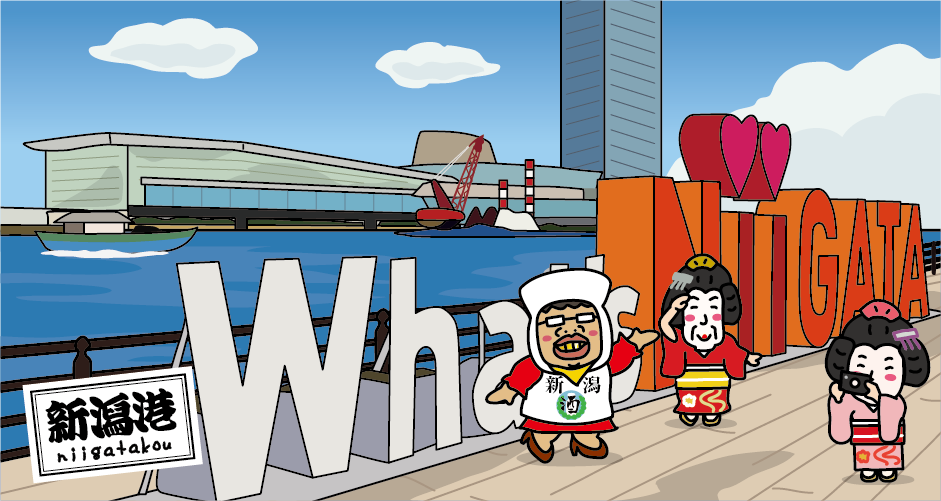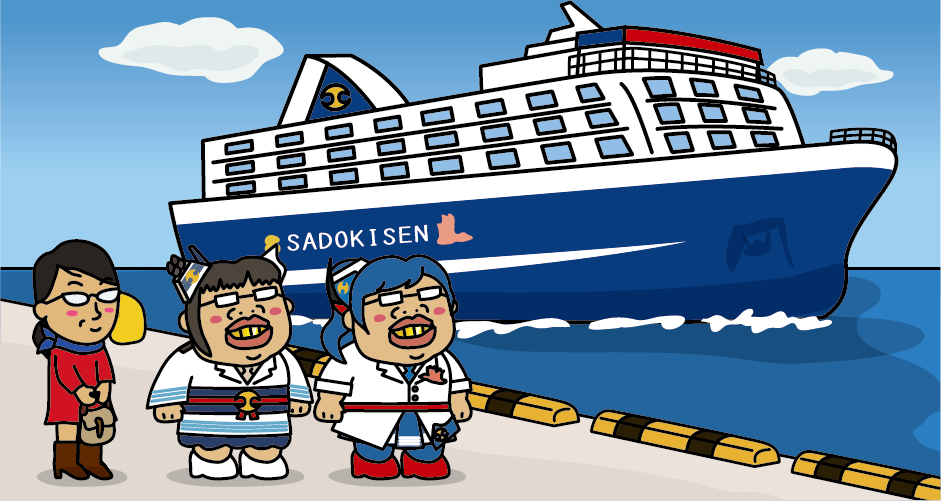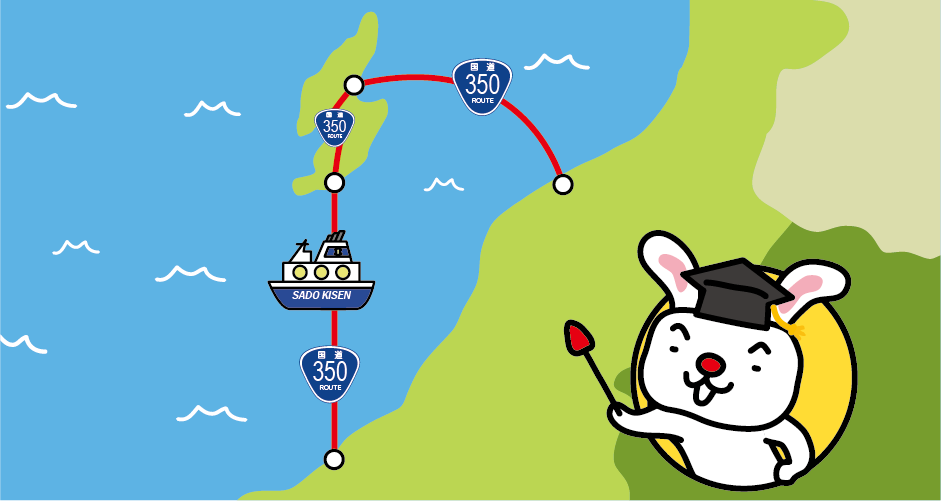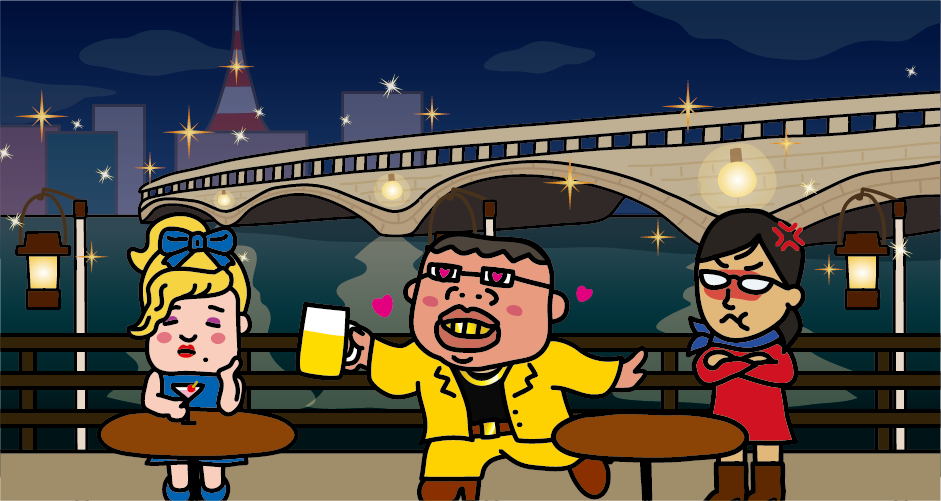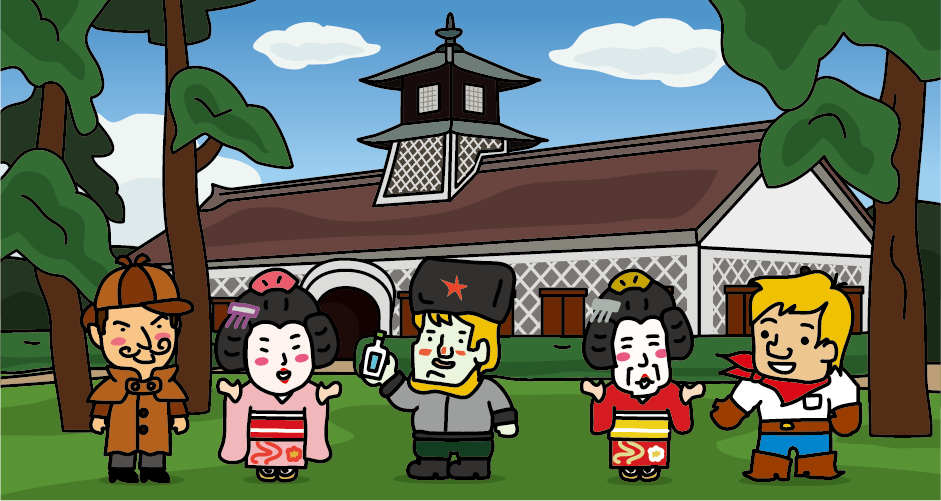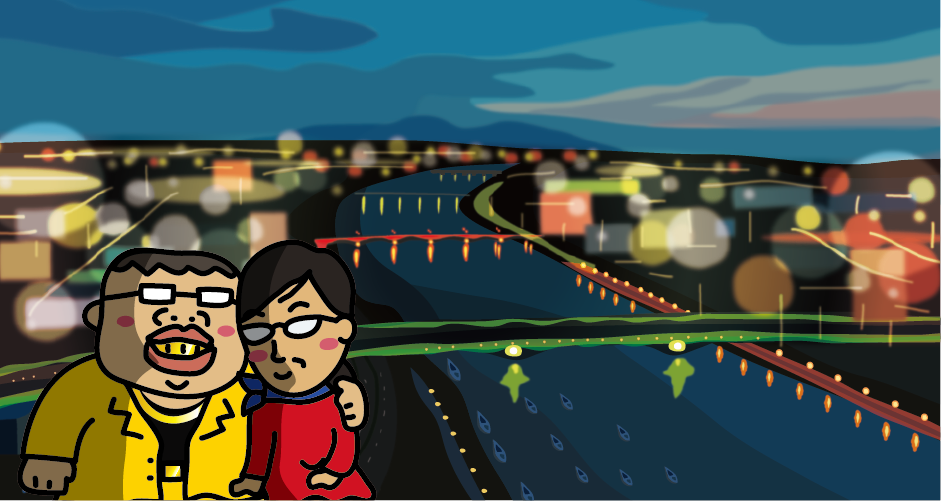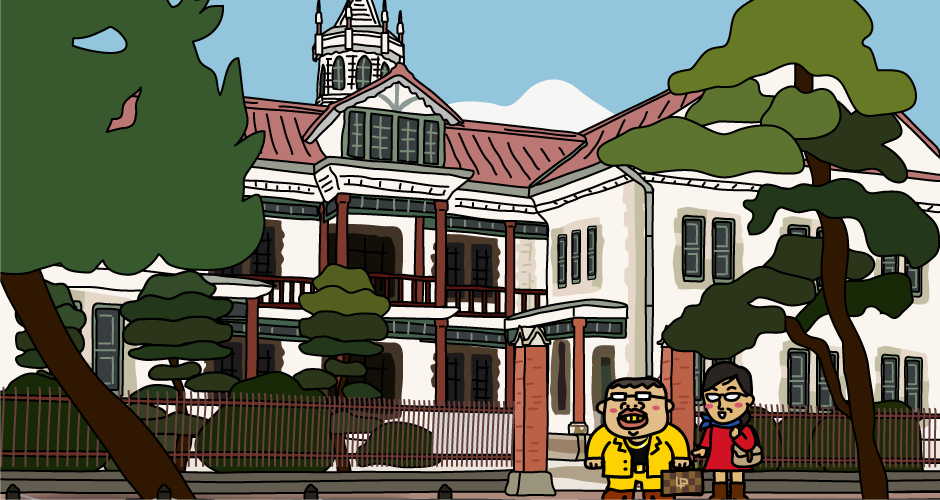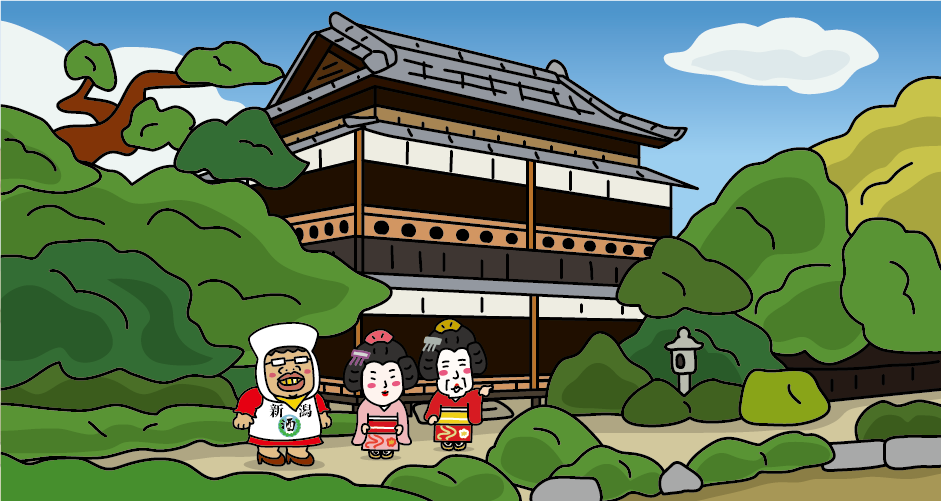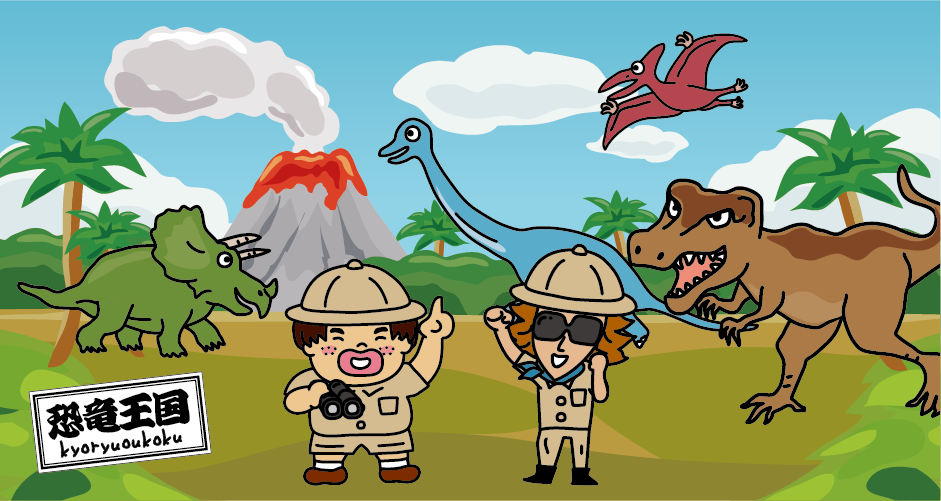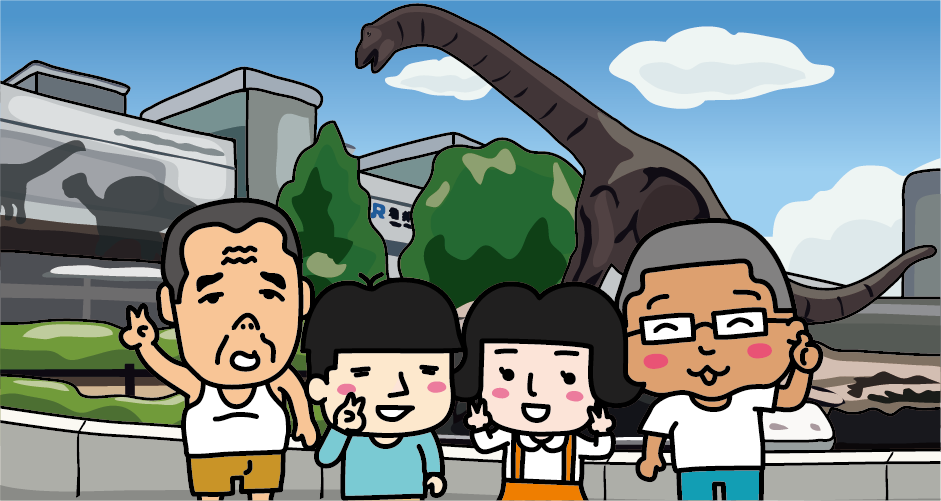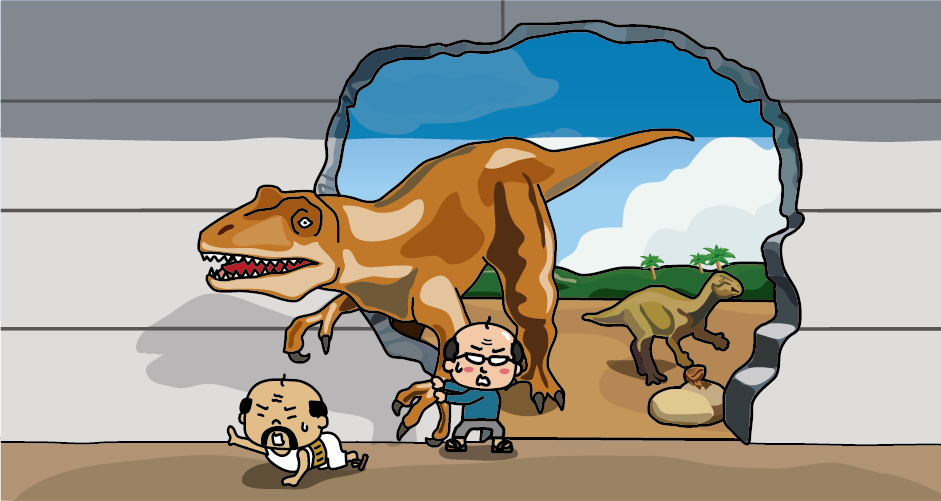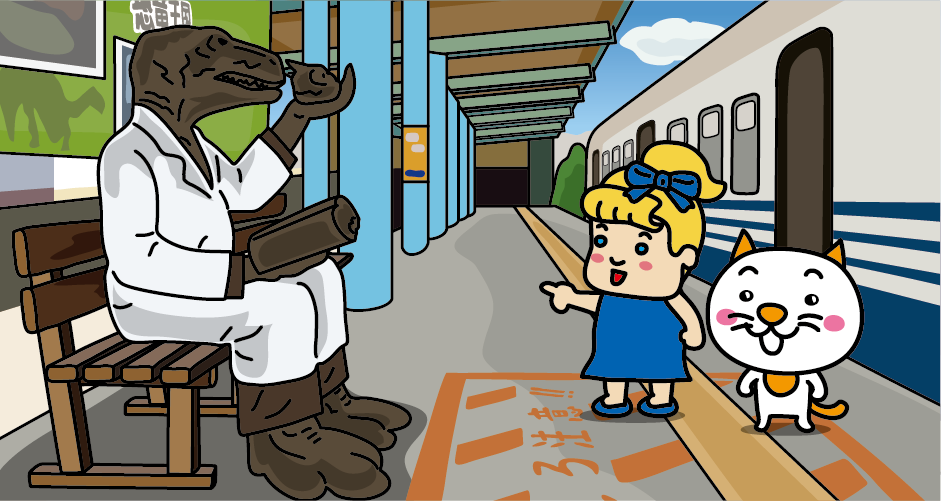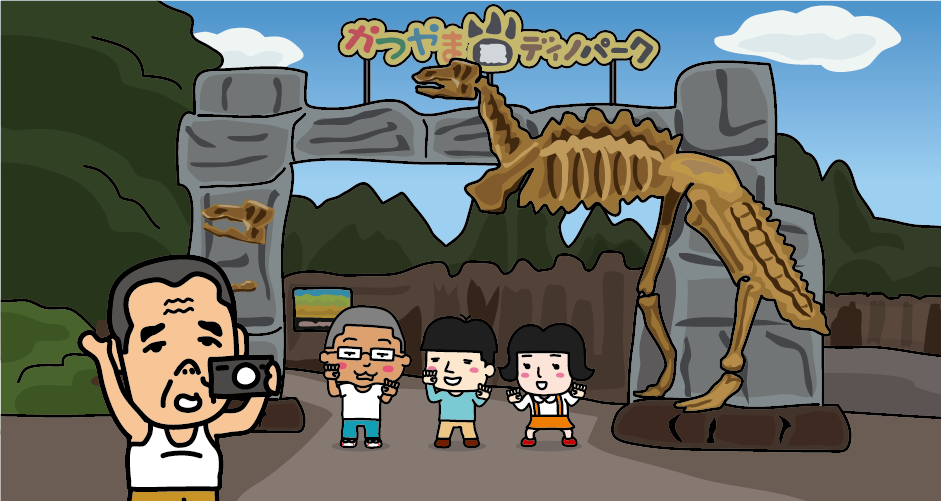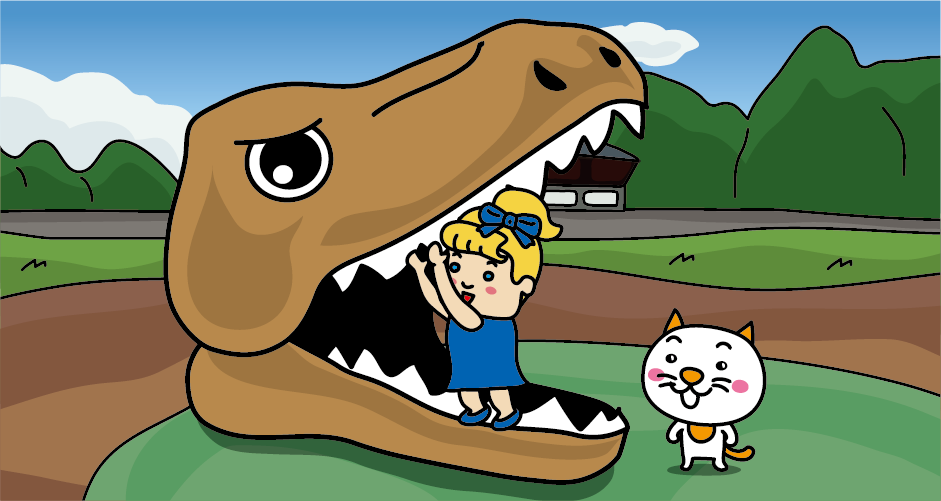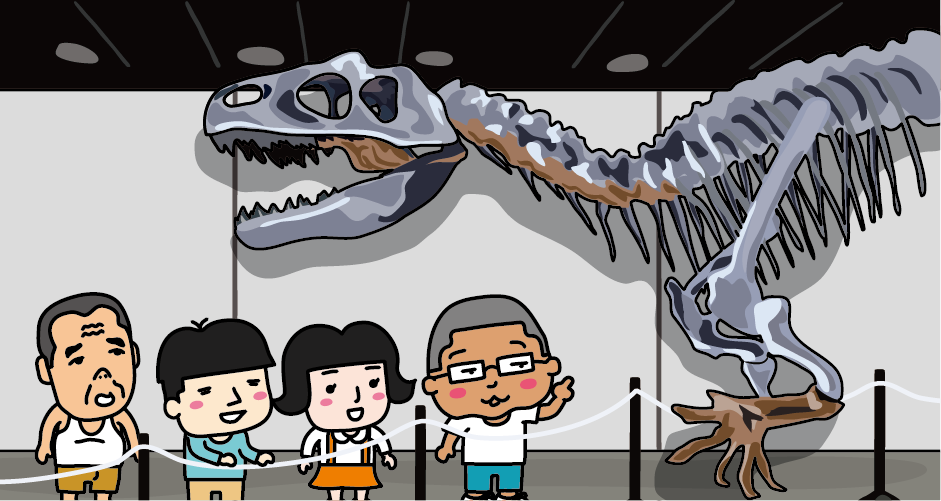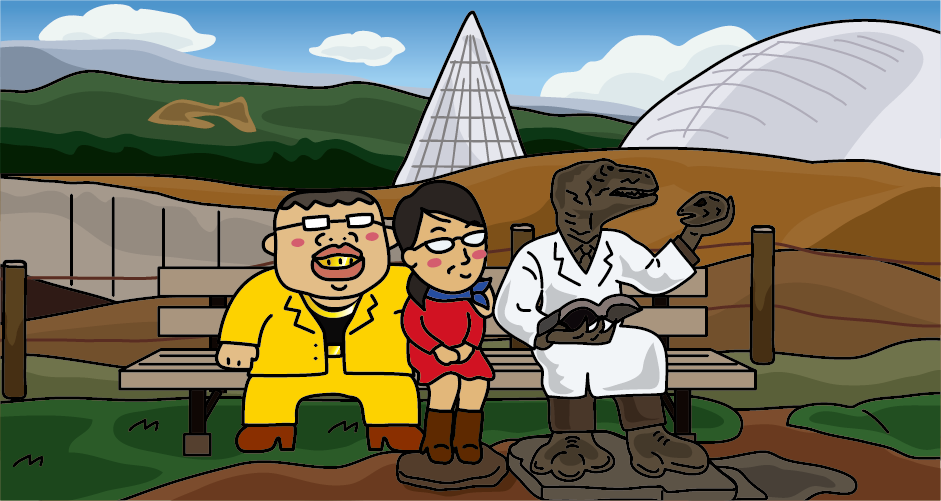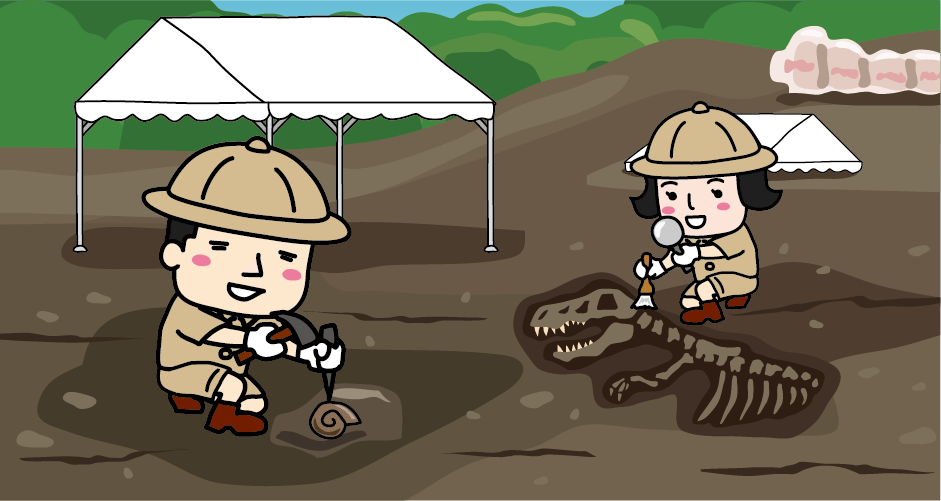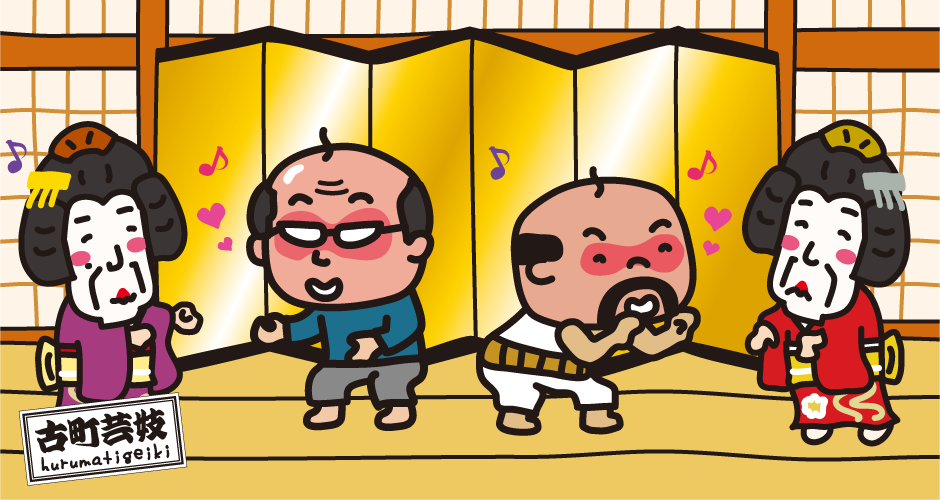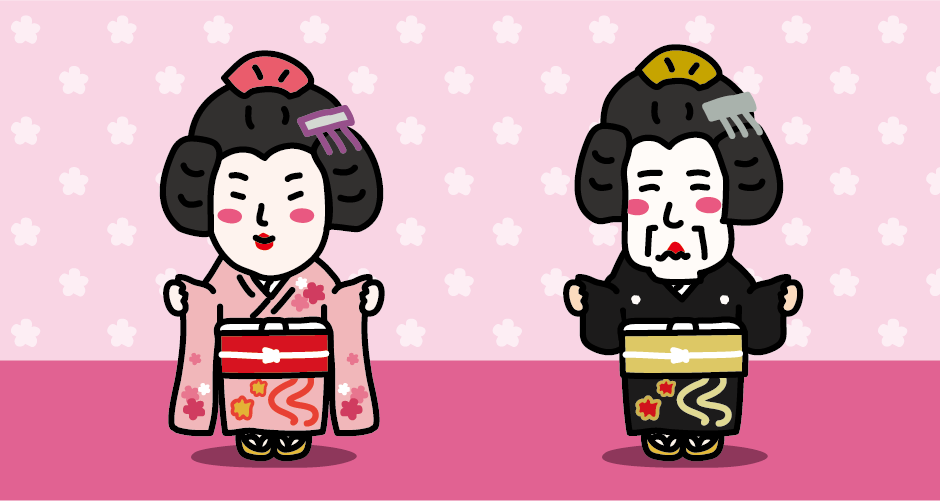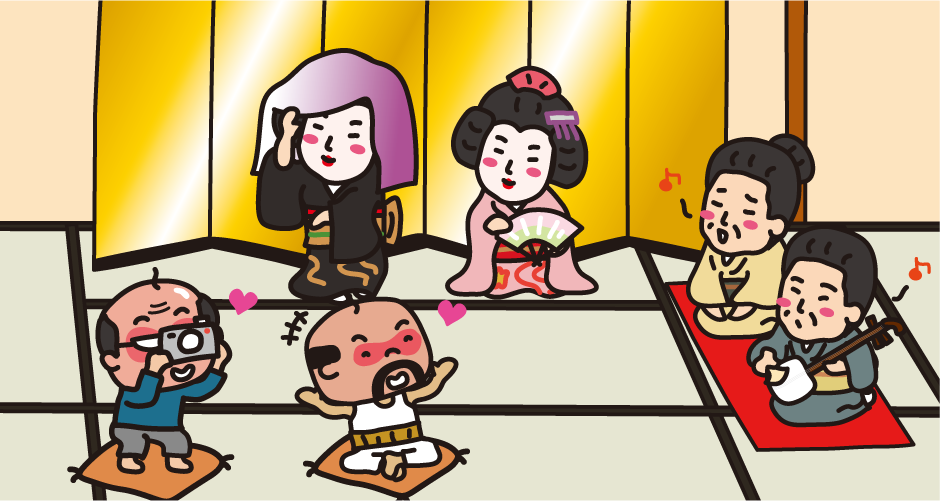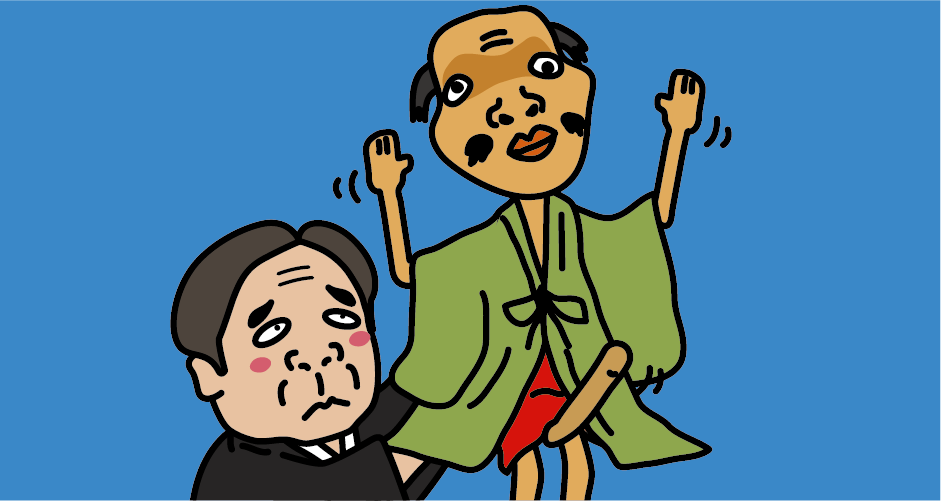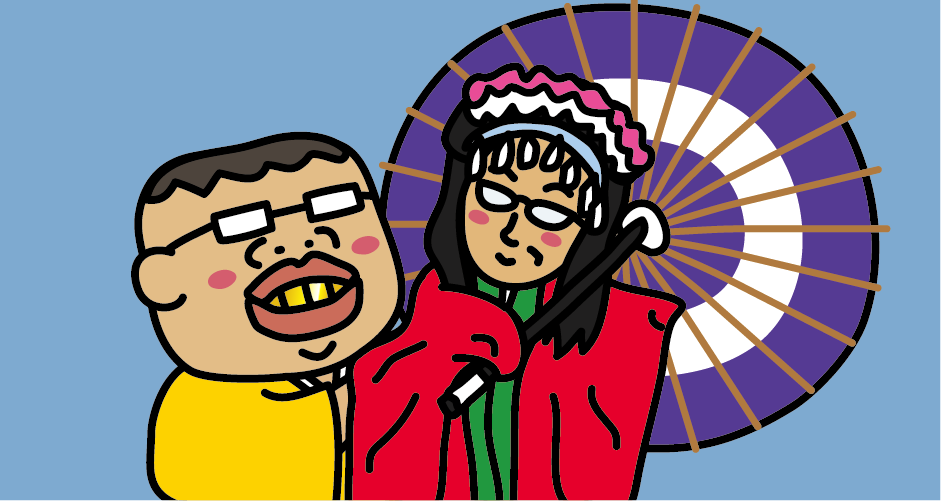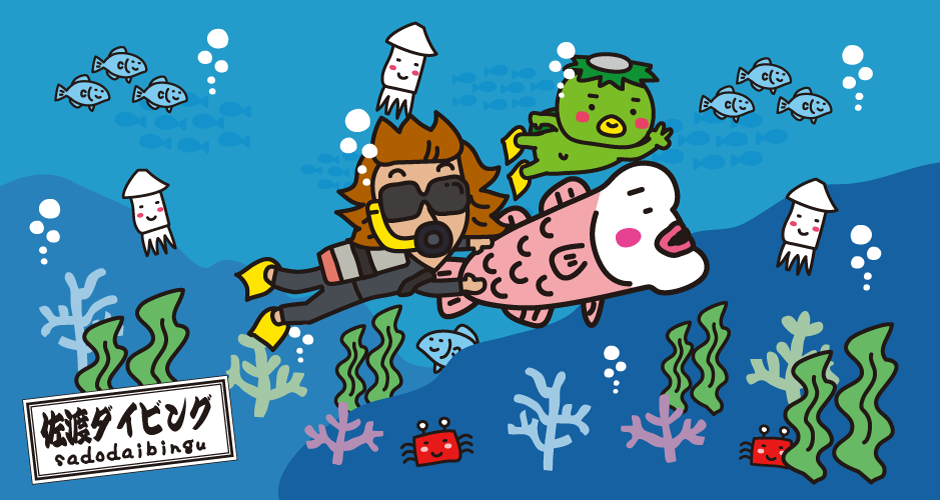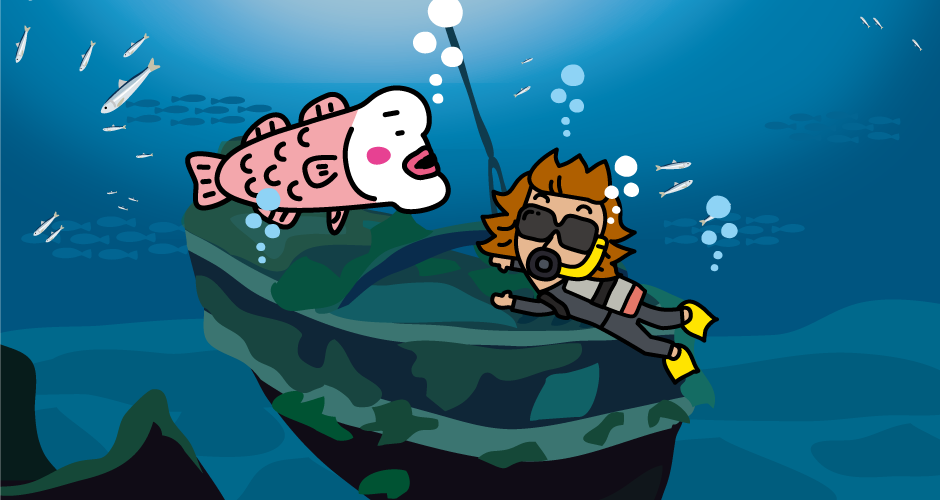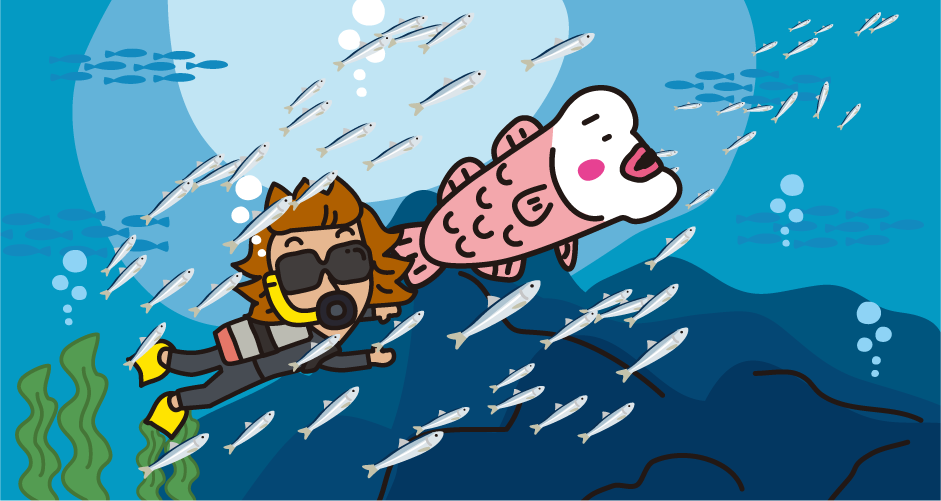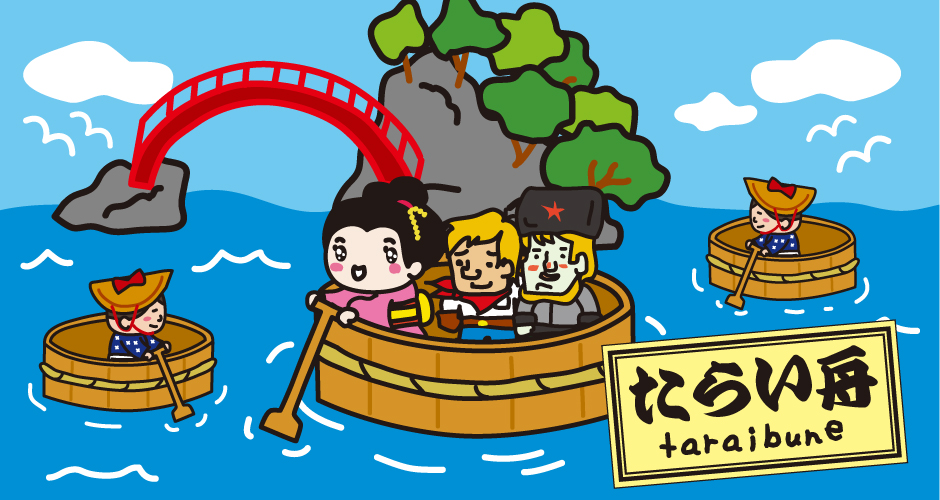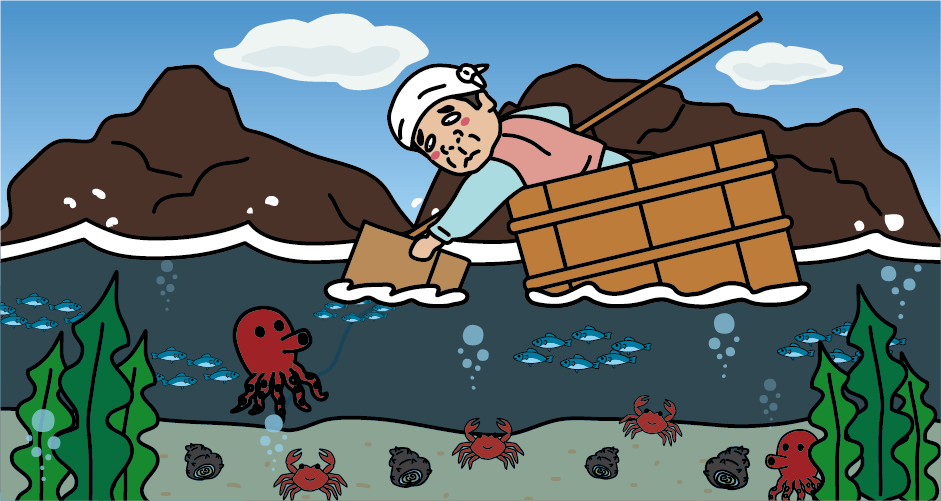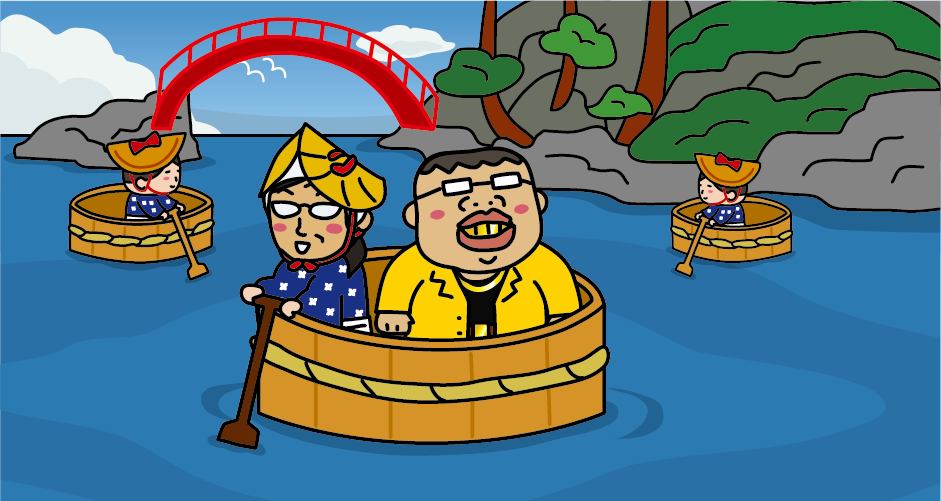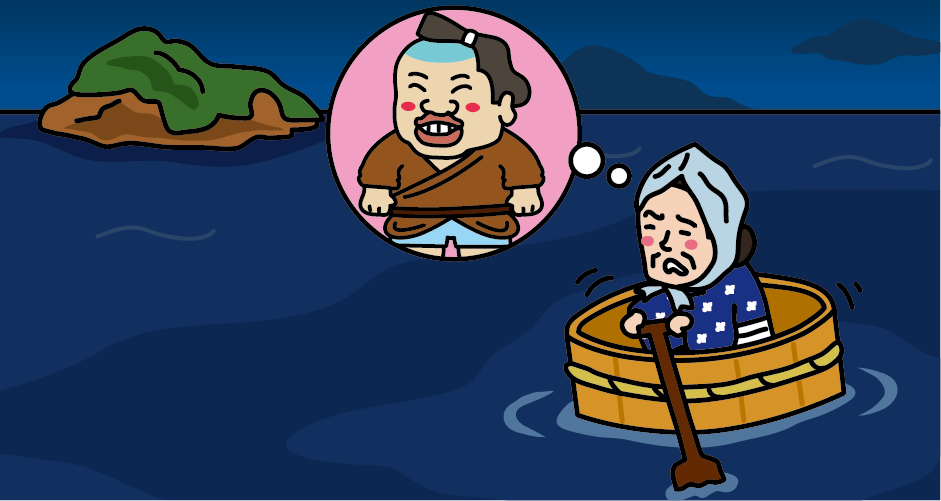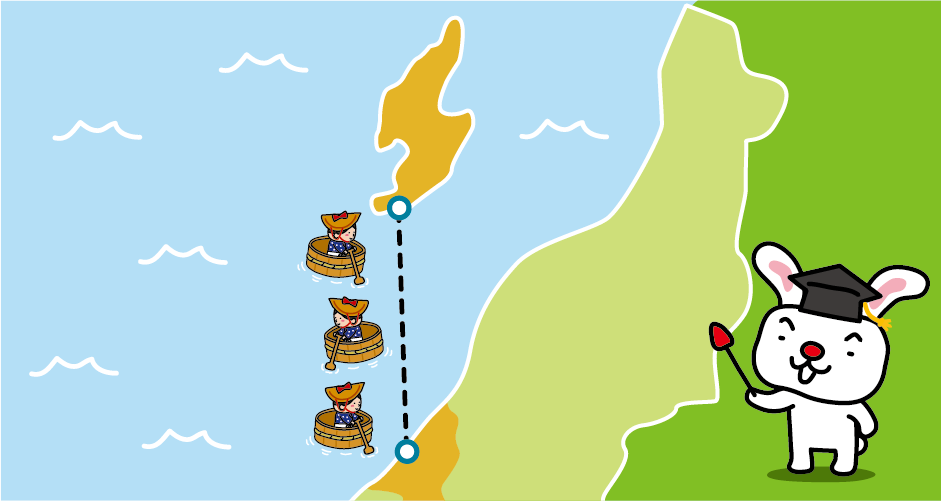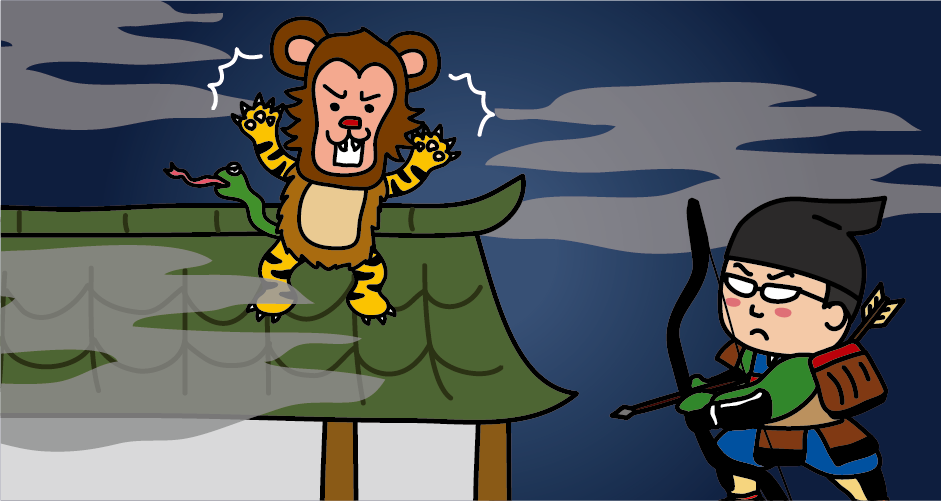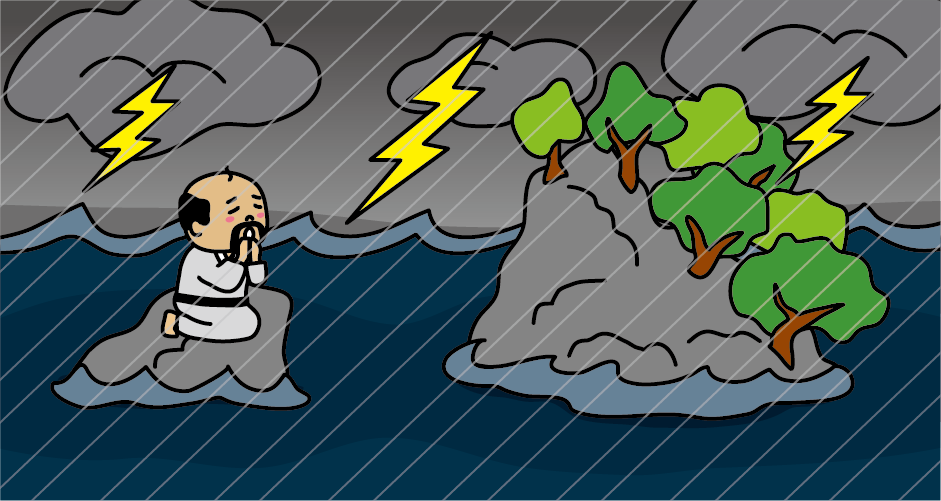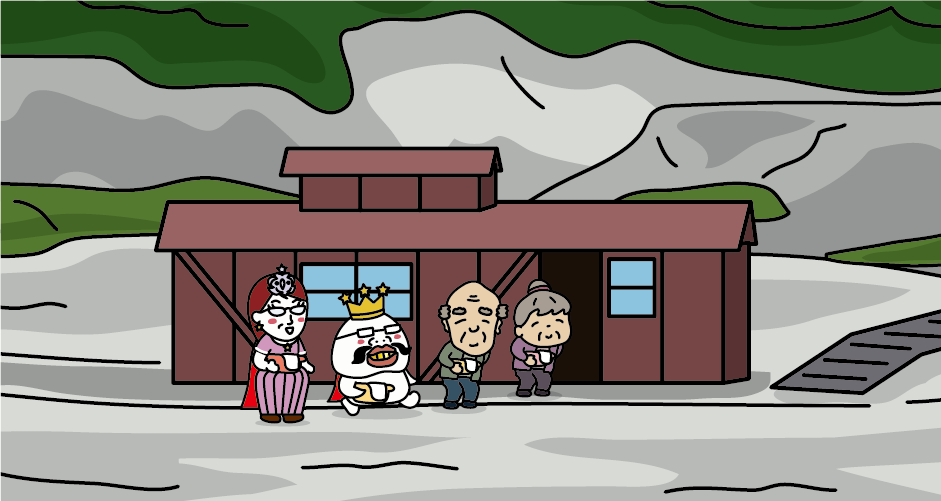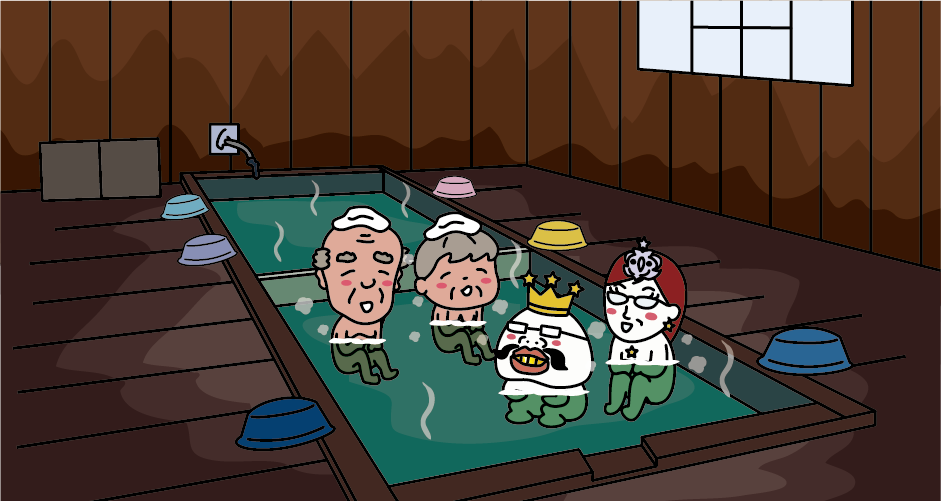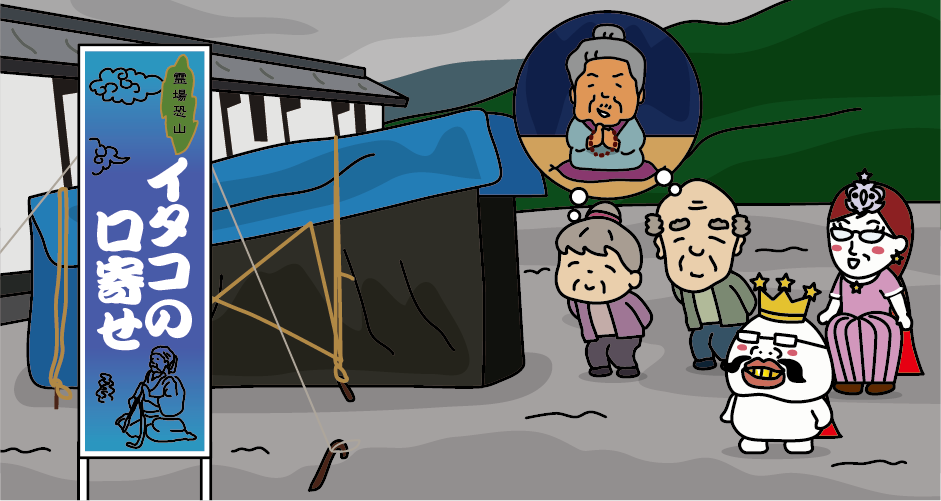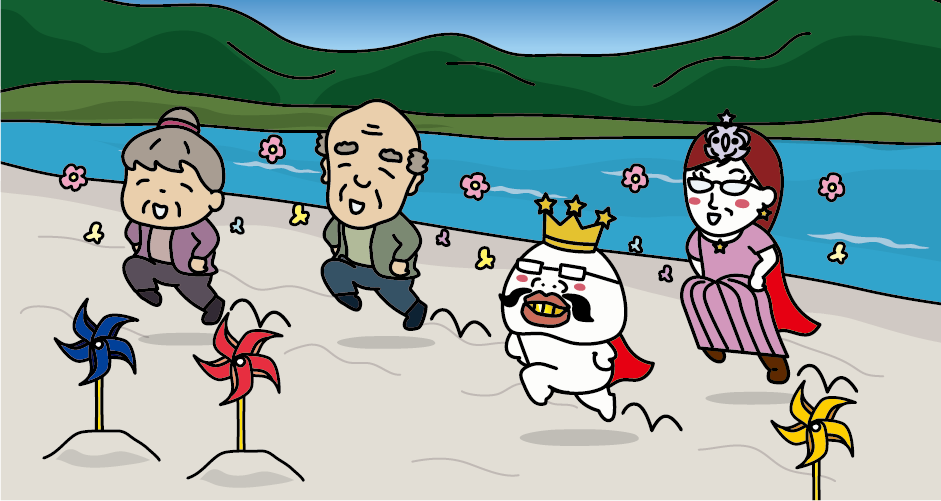At Mt. Tenjo in Yamanashi Prefecture, there is another “Kachikachiyama” story involving a 16-year-old girl and a 37-year-old middle-aged man.
The folktale “Kachi kachi yama” is an old tale that has been handed down since the end of the Muromachi period (late 16th century). (In Japanese, “kachi kachi” means the clacking sound of fire and “yama” means a mountain.) The stage is said to be “Mt. Tenjo” in Fujikawaguchiko Town, Yamanashi Prefecture. In the folktale “Kachikachiyama”, but a rabbit defeats a vicious raccoon dog on behalf of a old man to avenge a murdered old woman, In the “Kachikachiyama” section of Osamu Dazai’s short story collection “Otogi-zoshi” (published in 1945), a rabbit is portrayed as a 16-year-old fastidious girl who is so innocent that she ruthlessly hurts others, and raccoon dog is portrayed as an ugly and foolish 37-year-old middle-aged man who is so in love with rabbit that he keeps following her no matter what she does. “Tenjoyama Park” developed in Mt. Tenjo and there are monuments of the rabbit and the raccoon dog representing scenes of the story are set up everywhere. 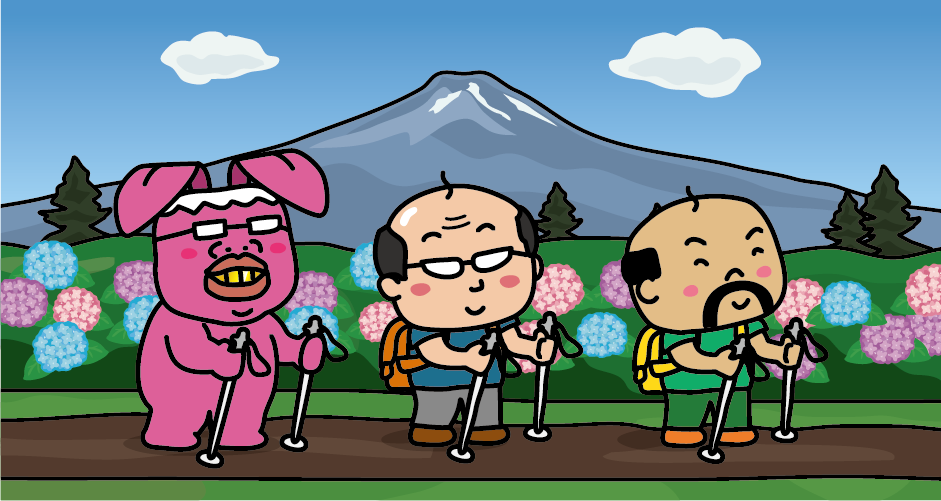 There is a hiking trail on Mt. Tenjo (elevation 1104m). It is called “Ajisai Hiking Trail” because about 100,000 hydrangeas (Ajisai in Japanese) will be in full bloom all around from the middle of July to the beginning of August.
There is a hiking trail on Mt. Tenjo (elevation 1104m). It is called “Ajisai Hiking Trail” because about 100,000 hydrangeas (Ajisai in Japanese) will be in full bloom all around from the middle of July to the beginning of August.  The recommended course is to go up by using the ropeway connecting the lakeside of the Lake Kawaguchi and enjoy the scenery by going down the “Hiking Trail” from top of the mountain.
The recommended course is to go up by using the ropeway connecting the lakeside of the Lake Kawaguchi and enjoy the scenery by going down the “Hiking Trail” from top of the mountain. 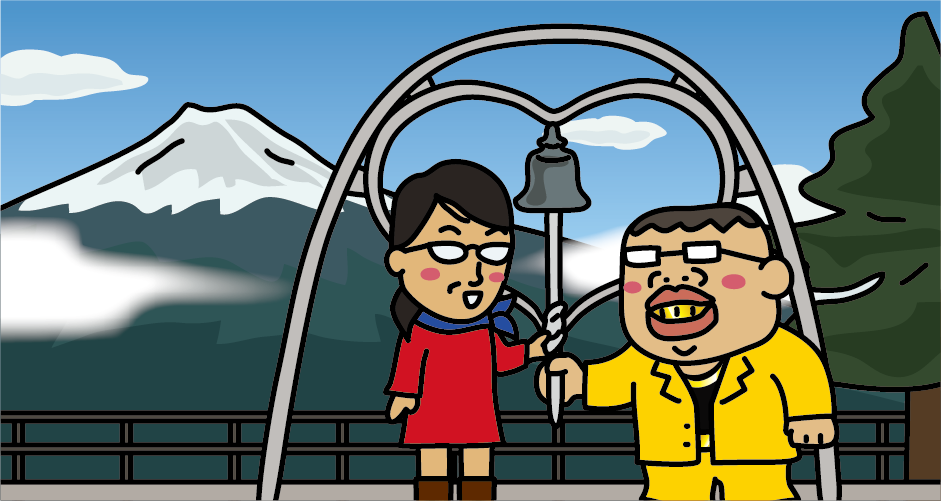 There is a heart-shaped bell installed and it is said that if you look at Mt. Fuji and ring the bell, your love will be fulfilled.
There is a heart-shaped bell installed and it is said that if you look at Mt. Fuji and ring the bell, your love will be fulfilled.  “Nakabadaira Observation Plaza” is a viewpoint of Mt.Fuji and also there is a monument of Osamu Dazai. The following is an outline of “Kachi kachi yama” (original story). It is too cruel to read for children.
“Nakabadaira Observation Plaza” is a viewpoint of Mt.Fuji and also there is a monument of Osamu Dazai. The following is an outline of “Kachi kachi yama” (original story). It is too cruel to read for children.  Once upon the time, there was old man and old woman who live by cultivating the soil. old man spread the seeds in the field, but their sprout never came out and it made him wondered. One day he found out that it was because of a raccoon dog. He caught the raccoon dog, took it home and told old woman “Let’s cook raccoon dog soup and eat it”, and he returned to the field.
Once upon the time, there was old man and old woman who live by cultivating the soil. old man spread the seeds in the field, but their sprout never came out and it made him wondered. One day he found out that it was because of a raccoon dog. He caught the raccoon dog, took it home and told old woman “Let’s cook raccoon dog soup and eat it”, and he returned to the field.  Old woman started preparing to cook raccoon dog soup. Then the raccoon dog started to talk to her. “I am a bad raccoon dog. There is nothing for me but to be eaten. But, it must be difficult to cook raccoon dog soup alone. I will help you. I will be tied up with a rope again by old man come back home.” A kind-hearted old woman untied the rope as the raccoon dog says, then the raccoon dog beat her to death with a pestle. The raccoon dog peeled off old woman and put her flesh in a pot to cook old woman’s soup. The raccoon dog turned into the old woman and waited for old man to come home.
Old woman started preparing to cook raccoon dog soup. Then the raccoon dog started to talk to her. “I am a bad raccoon dog. There is nothing for me but to be eaten. But, it must be difficult to cook raccoon dog soup alone. I will help you. I will be tied up with a rope again by old man come back home.” A kind-hearted old woman untied the rope as the raccoon dog says, then the raccoon dog beat her to death with a pestle. The raccoon dog peeled off old woman and put her flesh in a pot to cook old woman’s soup. The raccoon dog turned into the old woman and waited for old man to come home. 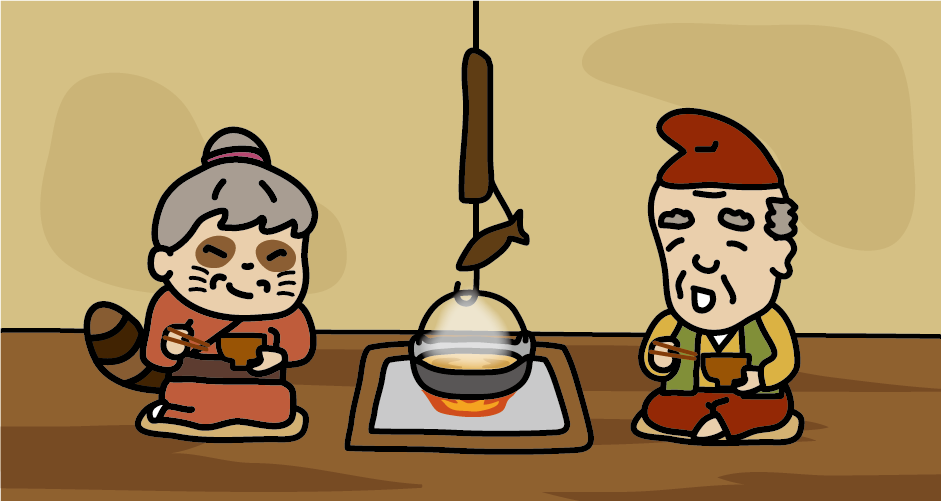 Once old man came back from the field, the raccoon dog turned into old woman and let old man eat a soup made from old woman, “old woman soup”. When he ate it, the raccoon dog gloated over it and went back to the mountain. Old man became ill in bed because of so much of a traumatic experience.
Once old man came back from the field, the raccoon dog turned into old woman and let old man eat a soup made from old woman, “old woman soup”. When he ate it, the raccoon dog gloated over it and went back to the mountain. Old man became ill in bed because of so much of a traumatic experience.  The rabbit heard about the story and decided to have old woman’s revenge. The rabbit asked the raccoon dog to gather firewood together. The rabbit walked behind the raccoon dog and lit the firewood the raccoon dog was carry on his back. The raccoon dog wondered what about the sound of “kachi kachi” and asked the rabbit. The rabbit answered, “The kachi kachi bird of kachi kachi yama is singing.” The raccoon dog got a large burn on his back.
The rabbit heard about the story and decided to have old woman’s revenge. The rabbit asked the raccoon dog to gather firewood together. The rabbit walked behind the raccoon dog and lit the firewood the raccoon dog was carry on his back. The raccoon dog wondered what about the sound of “kachi kachi” and asked the rabbit. The rabbit answered, “The kachi kachi bird of kachi kachi yama is singing.” The raccoon dog got a large burn on his back. 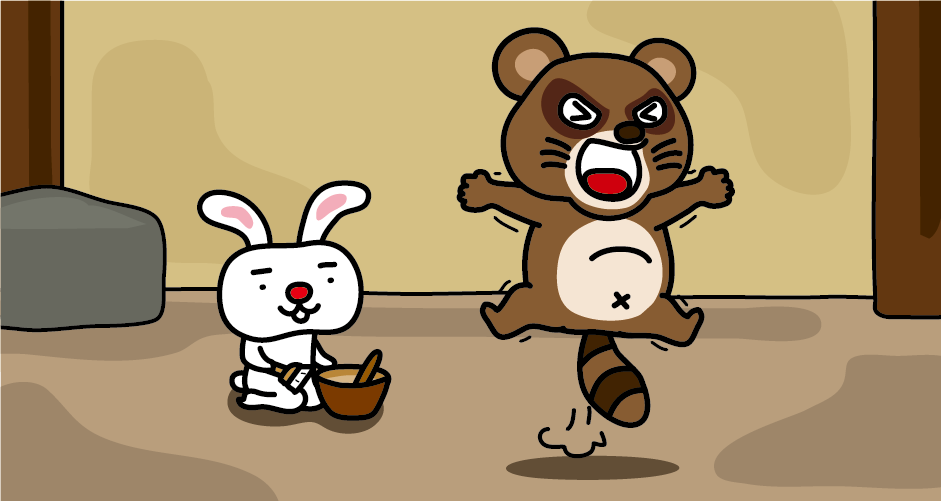 The rabbit applied miso with chili peppers on his back, saying it is good medicine for the burn raccoon dog had. Then the raccoon dog suffered from further pain.
The rabbit applied miso with chili peppers on his back, saying it is good medicine for the burn raccoon dog had. Then the raccoon dog suffered from further pain. 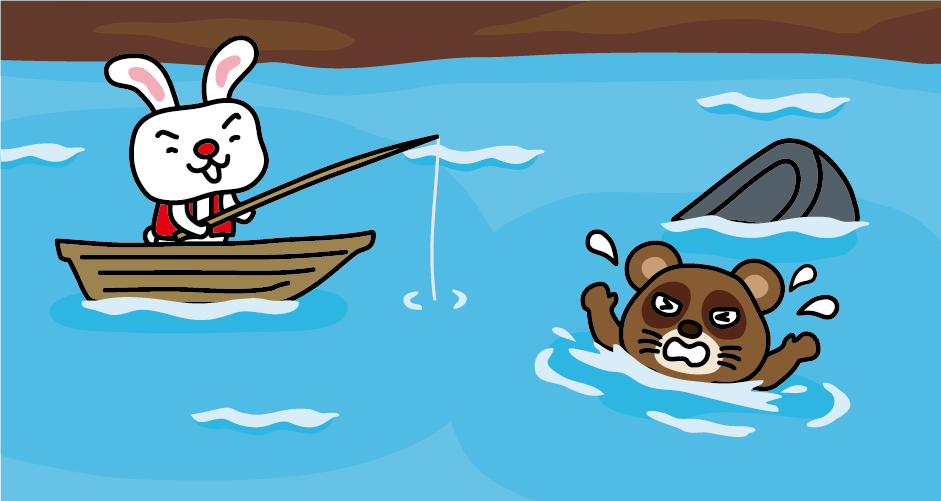 A few days later, the rabbit prepared a small wooden ship and a large muddy ship and asked the raccoon dog to go fishing. The rabbit told the raccoon dog to choose a larger muddy ship because a large ship will be able to catch more fish. After a while, a muddy ship sunk with the raccoon dog on it, and the raccoon dog got drowned.
A few days later, the rabbit prepared a small wooden ship and a large muddy ship and asked the raccoon dog to go fishing. The rabbit told the raccoon dog to choose a larger muddy ship because a large ship will be able to catch more fish. After a while, a muddy ship sunk with the raccoon dog on it, and the raccoon dog got drowned.
Access to Tenjo Park
From Tokyo
It takes about 1 hour from JR Tokyo Station to JR Takao Station by JR Chuo Line (rapid). Transfer to the JR Chuo Main Line at JR Takao Station and get to JR Otsuki Station in about 40 minutes.
From Osaka
It takes about 2 hours by Tokaido Shinkansen from JR Shin-Osaka Station to JR Yokohama Station. Transfer to the JR Yokohama Line at JR Yokohama Station and get to JR Hachioji Station in about 50 minutes. Transfer to the Chuo Line at JR Hachioji Station and get to JR Takao Station in about 5 minutes. Transfer to the JR Chuo Main Line at JR Takao Station and get to JR Otsuki Station in about 30 minutes.
Transfer to the Fujikyuko Line at JR Otsuki Station and it takes about 1 hour to Kawaguchiko Station. About 15 minute-walk from JR Kawaguchiko Station. Alternatively, it takes about 10 minutes from Kawaguchiko Station bus stop to Yuransen/ropeway iriguchi bus stop. About 3 minutes by Mt. Fuji Panorama Ropeway.
